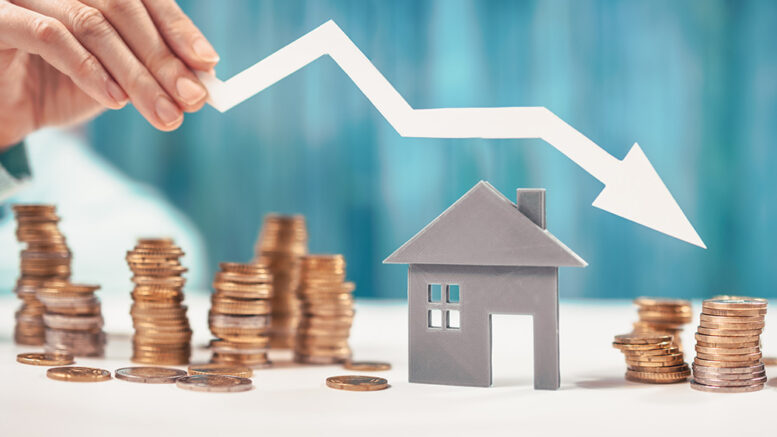The UK housing market is navigating turbulent waters as recent data from the Office for National Statistics (ONS) indicates a significant downturn, marking the most pronounced annual decline in house prices since 2011. As per the report, average house prices across the nation have dipped by 2.1% in the year leading up to November, with a notable decrease of 1.3% in October alone, marking this as the third consecutive month of depreciating house values.
The data paints a concerning picture, revealing a 0.4% fall on a seasonally adjusted basis within a single month. This downturn has adjusted the average house price to £285,000, showcasing a reduction of £6,000 within a year. The impact varies regionally, with the North East seeing a minimal drop of 0.4%, whereas London’s housing market experienced a staggering 6% fall, the steepest yearly drop since 2009, despite having the highest average house price of £505,000.
The decline in property values is comprehensive, affecting all property types. Terraced houses saw a price reduction of 3.8%, while the price of flats decreased by 1.8%.
Sarah Coles, the head of personal finance at Hargreaves Lansdown, reflects on the situation stating, “House price falls accelerated in November, as they endured the steepest drop in 13 years. It reflects just how dire things were at the tail end of the summer, when so many of these sales were agreed.” She points out that despite a reduction in mortgage rates since that period, the housing market is yet to overcome significant hurdles that continue to exert downward pressure on property values.
Coles highlights the peak mortgage rates in August, which presented a considerable challenge for buyers, leading to a stagnation in sales and compelling numerous sellers to lower their prices significantly. The market inertia persisted even as prices dropped, with buyers showing reluctance, a sentiment mirrored in the RICS survey indicating a scarcity of buyers in November.
Despite the prevailing market gloom, Coles identifies a beacon of hope as mortgage rates continue to descend, with the average 2-year rate now at 5.62% according to Moneyfacts. This reduction, she suggests, could potentially revitalise market demand. However, she cautions sellers against premature optimism, pointing to the unforeseen rise in inflation, escalating oil prices, and the global economic risks that may hinder the anticipated recovery of the property market.
Coles articulately voices the broader implications of this downturn, stressing the concern not just for sellers but for the average homeowner as well. The decline in house prices poses a threat of negative equity, particularly for those with lesser equity in their properties. Furthermore, she underscores the potential long-term ramifications on financial resilience, especially for those counting on property value appreciation to secure their financial stability in retirement.
The current landscape of the UK housing market, as depicted by the ONS data and Coles’s insights, paints a complex picture of challenges and cautious hope, encapsulating the economic volatility and its multifaceted impact on homeowners and the broader market.
ONS House price data for November was released today: UK House Price Index – Office for National Statistics (ons.gov.uk)







